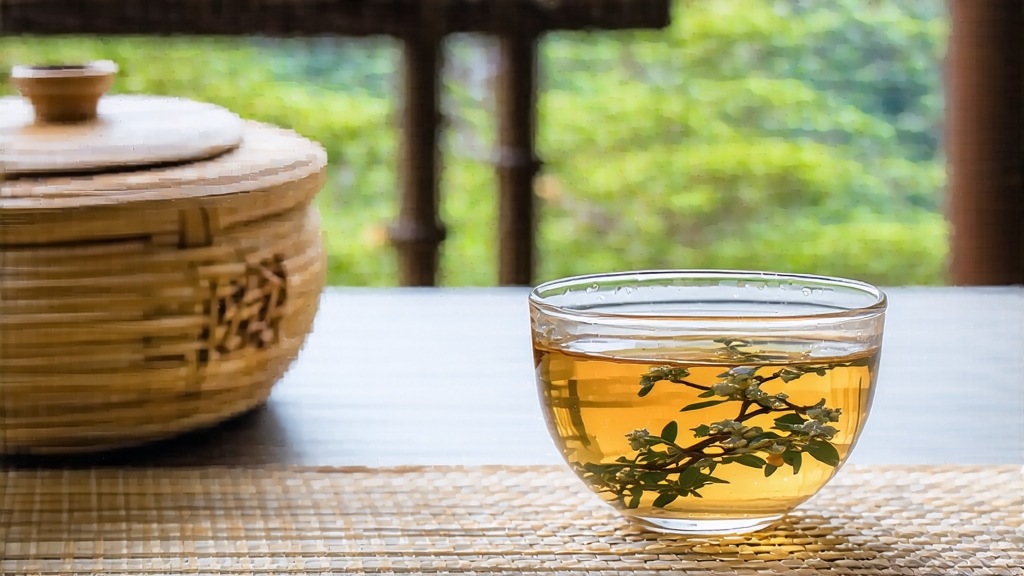
Hidden above the perpetual cloud belt of Sichuan’s western escarpment, the Meng Ding range has been sending fragrant tea caravans down the Min River for more than twelve centuries. Among the gifts once reserved for Tang-dynasty emperors, none carried more mystique than Meng Ding Huang Ya—literally “Yellow Bud from Meng Peak.” Today this micro-lot yellow tea is still hand-finished in batches smaller than a single Bordeaux château’s annual yield, yet its layered aroma and creamy, chestnut-sweet liquor deserve a place in every serious tea traveler’s mental atlas.
History: Tribute, Poetry, and Survival
The first written record appears in 808 CE, when the monk Shi Zhao presented “meng huang” to Emperor Xianzong; the court chronicle praises its “jade-yellow leaf and honeyed breath.” During the Song dynasty the tea tax bureau listed Meng Ding Huang Ya as one of only five “sky-grade” tributes, shipped in lead-lined bamboo tubes to keep its subtle fermentation from turning green. After the 17th-century turmoil that shifted imperial taste toward darker oolongs and puer, the craft nearly vanished; only a single stone-pressed manuscript kept the yellowing technique alive in the monastery of Gan-Deng An. Rediscovered in 1959 by the Sichuan Tea Research Institute, the variety was revived using 300 surviving mother bushes on the 1,450 m ridge known as Shangqing Peak.
Micro-Terroir: Where Clouds Polish the Leaf
Meng Ding enjoys a unique three-climate stack: subtropical valley air rises 1,000 m overnight, meets a cool temperate layer, then brushes against sub-alpine mist. The temperature swing can exceed 15 °C within two hours, forcing the tea bush to convert starch into soluble sugars and aromatic precursors. Granitic soils, rich in potassium and fluorine, are drained by mountain bamboo roots, so the leaf picks up a faint bamboo-lactone note that later echoes in the cup. Only the drought-hardy Sichuan local cultivar “Chuan Cha #9” survives on these narrow terraces; its small, thick buds oxidize slowly, the biochemical prerequisite for the yellowing phase.
Plucking Code: One Bud, One Universe
Official Meng Ding Huang Ya must be picked between Qingming and Guyu (roughly 4 April–20 April) when the bud weights 0.3–0.4 g and still hides its first tiny leaf like a folded paper fan. Experienced pickers climb 45-degree slopes at dawn while the leaf surface temperature is below 12 °C; this keeps enzymatic activity low until the leaf reaches the village workshop. A full kilogram of finished tea needs 9,000–10,000 buds, roughly one afternoon’s harvest from three veteran pluckers.
Craft: The Secret 48-Hour “Sealed Yellowing”
Yellow tea’s identity rests on a single, nerve-wracking step that teeters between green and black tea. After a brief outdoor withering of 30 minutes, the buds are wok-fired at 85 °C for three minutes—just long enough to halt grass-green oxidation but still preserve active polyphenol oxidase. The leaves are then wrapped in stacks of steamed cotton cloth and placed inside a bamboo box lined with wet parchment. For the next two nights the tea master opens the bundle every six hours to release trapped carbon dioxide, re-steam the cloth, and judge the leaf color by lamplight. When the edges turn antique gold and the midrib remains jade green, the “sealed yellowing” is complete. A final low-temperature bake at 55 °C for 40 minutes sets the flavor, leaving moisture around 5 %—slightly higher than green tea, explaining why Meng Ding Huang Ya can evolve in taste for up to three years if cellared correctly.
Grades & Styles
- Imperial Needle (Ya Zhen): 100 % single buds, liquor the color of white wine, aroma of steamed maize and orchid.
- Graceful Sparrow Tongue (Que She): One bud and one unfolded leaf, pressed into a slight curve, delivers a greener, more bamboo-forward cup.
- Mountain Ribbon (Shan Luo): Bud and two leaves, twisted into a loose spiral, created for modern gong-fu infusion with faster release and lighter yellowing.
Chemical Signature
High-performance liquid chromatography reveals a rare trio: theaflavin-3-gallate, chlorogenic acid, and